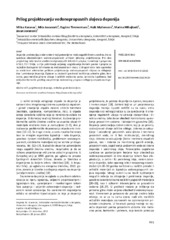Приказ основних података о документу
Impermeable layers in landfill design
Prilog projektovanju vodonepropusnih slojeva deponija
| dc.creator | Karanac, Milica | |
| dc.creator | Jovanović, Mića | |
| dc.creator | Timmermans, Eugène | |
| dc.creator | Mulleneers, Huib | |
| dc.creator | Mihajlović, Marina | |
| dc.creator | Jovanović, Jovan | |
| dc.date.accessioned | 2021-03-10T12:01:32Z | |
| dc.date.available | 2021-03-10T12:01:32Z | |
| dc.date.issued | 2013 | |
| dc.identifier.issn | 0367-598X | |
| dc.identifier.uri | http://TechnoRep.tmf.bg.ac.rs/handle/123456789/2306 | |
| dc.description.abstract | Landfills are complex systems that could potentially contaminate the environment. This needs to be prevented by providing impermeability during the landfill design. In this aim, the related regulations should be followed and adequate materials that provide impermeability should be used. The first part of the paper presents a review of the current regulations, interpretations, and recommendations from the U.S., EU and Republic of Serbia. Knowing that the Serbian regulation should fully follow the related European Directive, some inadequate formulations and terms were observed in the analyses related to the Directive Annex I, 3.2. Request of the Regulation that deals with the bottom of the landfill leakage is formulated differently than in the Directive as well. The mentioned problems enable some design solutions that are not among the best available techniques. In the second part, the paper presents a comparative analysis of possible alternatives in impermeable layer design, both for the bottom and landfill cover. Some materials like clay, CCL, GCL might not be able to satisfy the prescribed requirements. The longest lifetime and the lowest coefficient of permeability, as well as excellent mechanical, chemical and thermal stability, show the mixture of sand, bentonite and polymers (PEBSM). | en |
| dc.description.abstract | Deponije predstavljaju složen sistem koji potencijalno može zagaditi životnu sredinu, što se sprečava obezbeđenjem vodonepropusnosti prilikom njihovog projektovanja. Prvi deo preglednog rada bavi se analizom odgovarajućih tehničkih propisa, tumačenja i preporuka iz SAD, EU i Srbije, u cilju podsticanja valjanog usaglašavanja domaće prakse i propisa sa najboljim dostupnim tehnikama na međunarodnom nivou. U drugom delu rada uporedno su analizirane alternative prilikom projektovanja vodonepropusnih slojeva za oblaganje dna i prekrivanje deponija. Opisane su slabosti i prednosti korišćenja prirodne gline, bentonita, geosintetičke glinene obloge i različitih mešavina peska, bentonita i polimera. Rad zaključno formuliše predlog unapređenja nacionalnog propisa o odlaganju otpada na deponije. | sr |
| dc.publisher | Association of Chemical Engineers of Serbia | |
| dc.relation | info:eu-repo/grantAgreement/MESTD/Technological Development (TD or TR)/34009/RS// | |
| dc.rights | openAccess | |
| dc.rights.uri | https://creativecommons.org/licenses/by-nc-nd/4.0/ | |
| dc.source | Hemijska industrija | |
| dc.subject | landfill design | en |
| dc.subject | landfill impermeability | en |
| dc.subject | artificial geological barrier | en |
| dc.subject | projektovanje deponija | sr |
| dc.subject | veštačka geološka barijera | sr |
| dc.title | Impermeable layers in landfill design | en |
| dc.title | Prilog projektovanju vodonepropusnih slojeva deponija | sr |
| dc.type | article | |
| dc.rights.license | BY-NC-ND | |
| dc.citation.epage | 973 | |
| dc.citation.issue | 6 | |
| dc.citation.other | 67(6): 961-973 | |
| dc.citation.rank | M23 | |
| dc.citation.spage | 961 | |
| dc.citation.volume | 67 | |
| dc.identifier.doi | 10.2298/HEMIND121227012K | |
| dc.identifier.fulltext | http://TechnoRep.tmf.bg.ac.rs/bitstream/id/8955/0367-598X1306961K.pdf | |
| dc.identifier.scopus | 2-s2.0-84891400443 | |
| dc.identifier.wos | 000329540700010 | |
| dc.type.version | publishedVersion |

